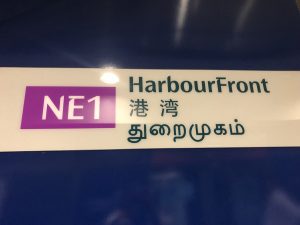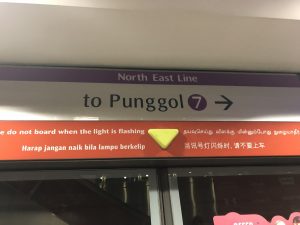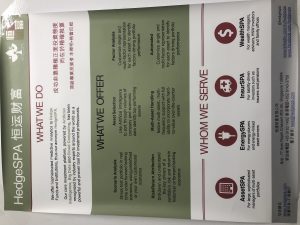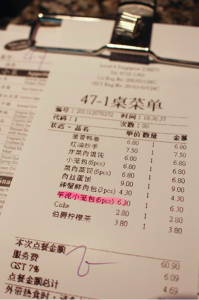As one of the most international and multicultural societies, Singapore clearly demonstrates its multilingual characteristic as the result of vicissitudes in its history and culture, and therefore reflects the co-existence of diverse races and inheritance. Because of the policy encouragement and economic needs, Singapore has developed a unique language system with English as the main official language and a variety of mother tongues as second languages.
Singapore is not the only society that exhibits multilingual phenomenon, but Singapore’s multilingual system involves a much larger number of languages, a deeper level of their uses, and a greater lingual density than other countries. First, Singapore speaks more than 20 languages and dialects including English, Mandarin, Hokkien, Malay, Tamil, Hindi and etc (David 2). Second, the use of all of these languages is heavy enough that they can all be considered mainstream languages in Singapore. Signs in public places, such as the ones in subways, usually come in three to four languages: English, Chinese, Tamil and sometimes Malay (the four official languages of Singapore).

Subway signs in three languages: English, Chinese, Tamil. The sequence indicates priority of the languages.

Four official languages. This one includes Malay
Third, lingual density is an original concept of this article, which means that Singapore has a lot of common languages in an extremely limited geographical space. This is in contrast to China which has 56 nationalities, 32 provinces and 5 time zones, as well as hundreds of dialects. Despite the diversity of dialects, one city or even one province usually share the same dialect so many regions are actually monolingual systems if one zooms in the map. In Singapore, however, no two groups of people
speak exactly the same language even in a narrow subway station. Besides the number, level, and density of languages, Singapore’s language landscape is also featured in its tangle and assimilation of all languages—how Singlish was created in the process of ethnic integration.
Despite the diversity in languages, it is still English and Chinese that dominate Singapore, which used to be colonized by the British and immigrated by Chinese. Although 75% of the population is of Chinese descent, the Chinese language and its dialect family occupy less than 75% share of the Singaporean language system. In the middle of the last century, in order to replace ethnic recognition with national recognition and connect with the western world, the government still strongly encouraged and developed English education after the independence of Singapore, meanwhile abolishing Chinese schools, and engaging in de-Chinazation to some degrees. Therefore, English is considered to be a more formal, public language and is used by default in formal settings such as workplaces, business industry.

Company poster in English, but it also has Chinese name
Nevertheless, with the continuous entry of Chinese immigrants, the inheritance of Chinese families, and the rapid development of China economy, Chinese is still the most commonly used language except English. Chinese and related dialects are more common in daily occasions such as food courts, restaurants, and family communications. It has become a daily routine that a cashier who is speaking Chinese with an acquaintance would greet you with English in the next second.

Restaurant receipt written in Chinese
Obviously, Singapore’s language distribution is strongly regional. This results from the British government’s segregation policies during the colonial era. Therefore, geographic linguistic features can be found everywhere in a certain ethnic gathering area. Some famous gathering areas are Chinatown and Little India where one can tell the commonly used languages just by their names.
With the inheritance and assimilation after generations, Singapore tends to be gradually forming its own language system based on various languages. At the same time, due to the government’s massive introduction of foreign labor and high-level talents, Singapore’s language system will continue to have new, exotic ingredients to join.
Work Cited
1. David, Maya Esther. “Language Policies -Impact On Language | Singapore | Malaysia”. Scribd, 2019, https://www.scribd.com/document/17081287/Language-Policies-Impact-on-Language. Accessed 27 June 2019.
I think it was fascinating how you described your experience on the subway and would see every group of people would speak another language. Did you have a chance to speak to anyone in Singapore who would know about how the multitude of languages is addressed in schools? I wonder if students would have to learn one of the other official languages as well.
Hi Anayesha, thank you for the comments! I think besides English Singapore students can study their mother languages in schools as well, but it is not a must. It really depends on the school they go to (for example there are Chinese schools and Indian schools) and also the student’s family background.
Your experience with Singapore is relatively similar to my experience with Hong Kong as both incorporates a multilingual system. One thing that was surprising to me was the explicit incorporation of the languages into the community in the form of signs. In Hong Kong, the signs only have Chinese and English, but in your post, you stated that signs in Singapore contain Chinese and English in addition to other languages. This definitely shows the cultural impact of other cultures in Singapore. I also am planning a trip to Singapore within the next few weeks so your post was very beneficial.
Hi Steven thanks for commenting! I’m glad that my post is helpful to your future visit in Singapore. Hong Kong and Singapore definitely have many things in common regarding the language system. Hongkong probably has closer connection with the mainland China, while Singapore has more exposure to other South East Asian cultures and to other parts of China. Hongkong mainly uses cantonese and English but Singapore uses a variety of dialects and languages. So good luck with your stay in Singapore!